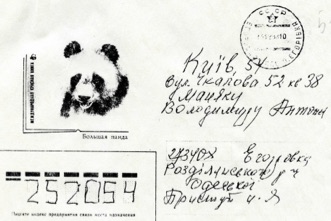












Full Name in Ukrainian: Іван Якович Приступ
Full Name in English: Ivan Prystup
Data of Birth: Unknown
Place of Birth: Borsuky
Raion: Balta raion (currently Podolsk raion)
Oblast: Moldovan Autonomous Soviet Republic (currently Odesa oblast)
Country: Ukraine
Copy of original: Yes
Envelope: Yes
Number of pages: 6
Keywords: Ukraine--History--Famine, 1932-1933--Personal narratives; Famines--Ukraine--History--Sources; Famine victims; Holodomor; family mortality; Голодомор; search brigades; collective farm; mass mortality; mortality numbers; extrajudicial executions; cannibalism; ration in kolhosp; 1946-47 famine; burial.
Notes: The author is semiliterate


SYNOPSIS

The UCRDC depends on voluntary donations – both individual and institutional - for its financing.
It provides receipts for tax purposes.
-
‣Home
Ivan Prystup recalls the events of the Holodomor in the village of Borsuky, Balta raion, Moldovan Autonomous Soviet Republic (currently Borsuky, Podilsk raion, Odesa oblast).
Prystup recalls that the harvest in 1932 was good but all the grain was taken away by the search brigades sent from Odesa. They worked around the clock trying to extract as much grain as possible from the collective farm workers as well as the individual farmers.
Special attention was paid to the individual farmers although most of the grain was already taken away at the time of threshing. As a result, members of the collective farm and the individual farmers were left without foodstuff.
In 1932-1933, there were at least three different heads of the collective farm. The first one, Kovbasiuk, in 1932, refused to surrender to the state the grain kept (by the collective farm) for planting in the spring of 1933. He was removed for “sabotaging the grain procurement”. The next appointed head, Malion, gave away all the grain, even the bare minimum kept for feeding livestock. As a result, horses started dying en masse in late 1932-early 1933 and there was no grain left to sow in the spring of 1933. Malion was then replaced by Zadorozhny who managed to find some seed grain to complete the spring sowing.
Prystup recalls that people started dying in the latter half of 1932 and the number of deaths increased in the spring of 1933, especially among men and children, and peaked in the summer of 1933. He was appointed the secretary of the village council on May 1, 1933. It was his responsibility to submit reports on the progress of the agricultural works as well as to register all deaths.




